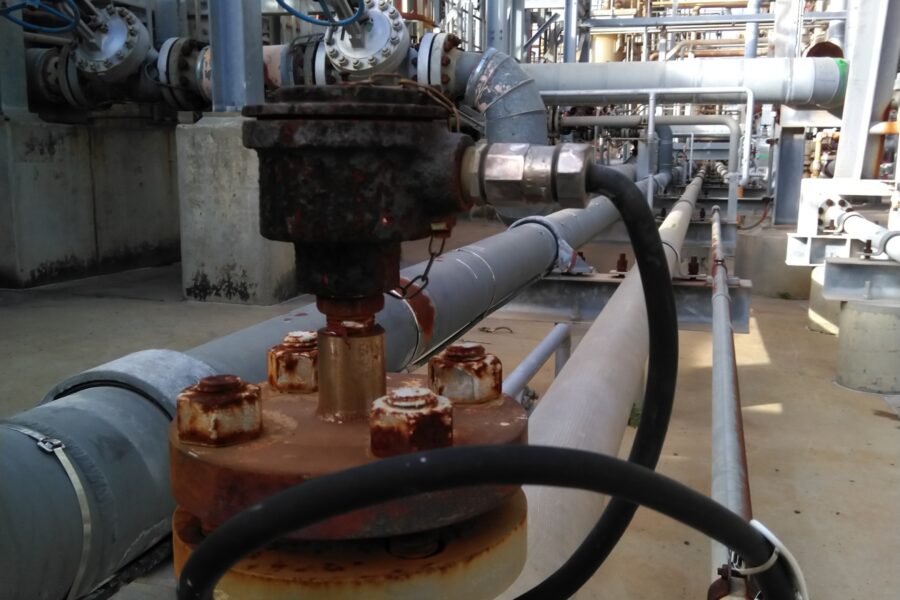7 Simple Techniques For Roar Solutions
7 Simple Techniques For Roar Solutions
Blog Article
The smart Trick of Roar Solutions That Nobody is Talking About
Table of ContentsThe Ultimate Guide To Roar SolutionsThe Main Principles Of Roar Solutions The Definitive Guide to Roar Solutions
In such an environment a fire or explosion is possible when 3 standard problems are satisfied. This is usually described as the "harmful area" or "burning" triangle. In order to protect installations from a possible explosion a method of evaluating and categorizing a possibly harmful area is needed. The purpose of this is to guarantee the correct choice and setup of devices to eventually prevent an explosion and to make certain safety and security of life.
(https://www.artstation.com/roarsolutions6/profile)
No devices must be set up where the surface area temperature level of the tools is above the ignition temperature level of the offered danger. Below are some typical dirt harmful and their minimum ignition temperature. Coal Dust 380C 225C Polythene 420C (thaws) Methyl Cellulose 420C 320C Starch 460C 435C Flour 490C 340C Sugar 490C 460C Grain Dirt 510C 300C Phenolic Material 530C > 450C Aluminium 590C > 450C PVC 700C > 450C Soot 810C 570C The probability of the risk being existing in a focus high sufficient to cause an ignition will certainly differ from location to location.
In order to categorize this danger an installation is divided right into locations of danger relying on the amount of time the dangerous exists. These locations are referred to as Zones. For gases and vapours and dusts and fibres there are 3 areas. Area 0 Zone 20 An unsafe atmosphere is highly most likely to be existing and may exist for long durations of time (> 1000 hours each year) or perhaps constantly Zone 1 Area 21 An unsafe environment is possible but not likely to be existing for extended periods of time (> 10 450 C [842 F] A classification of T6 means the minimum ignition temperature is > 85 C [185 F] Unsafe location electrical tools perhaps designed for usage in greater ambient temperatures. This would certainly suggested on the score plate e.g. EExe II C T3 Ta + 60C( This indicates at 60C ambient T3 will certainly not be surpassed) T1 T1, T2, T3, T4, T5, T6 T2 T2, T3, T4, T5, T6 T3 T3, T4, T5, T6 T4 T4, T5, T6 T5 T5, T6 T6 T6 A T Class rating of T1 implies the optimum surface area temperature produced by the instrument at 40 C is 450 C. Thinking the associated T Class and Temperature score for the equipment are ideal for the location, you can always utilize a tool with a much more rigorous Division score than required for the area. There isn't a clear answer to this question. It actually does depend on the kind of equipment and what repairs need to be executed. Devices with specific test procedures that can't be carried out in the area in order to achieve/maintain third party score. Have to come back to the manufacturing facility if it is prior to the equipment's solution. Area Repair By Authorised Worker: Complicated testing might not be called for however certain treatments may require to be adhered to in order for the equipment to maintain its 3rd event ranking. Authorised workers have to be employed to execute the work appropriately Repair need to be a like for like substitute. New element need to be thought about as a direct replacement needing no unique screening of the tools after the fixing is complete. Each tool with a hazardous rating ought to be evaluated independently. These are described at a high degree below, however for even more detailed information, please refer directly to the guidelines.
Getting The Roar Solutions To Work
The devices register is a detailed data source of devices records that consists of a minimum set of fields to determine each thing's area, technical parameters, Ex-spouse category, age, and environmental data. The ratio of Detailed to Close assessments will be identified by the Equipment Risk, which navigate to this website is assessed based on ignition risk (the chance of a resource of ignition versus the chance of a combustible ambience )and the dangerous location classification
( Zone 0Area 1, or 2). Carrying out a robust Risk-Based Evaluation( RBI )strategy is crucial for ensuring conformity and safety in taking care of Electrical Devices in Hazardous Areas( EEHA).
How Roar Solutions can Save You Time, Stress, and Money.

In regards to explosive threat, an unsafe location is an atmosphere in which an eruptive ambience exists (or might be anticipated to be present) in amounts that call for special preventative measures for the building and construction, installment and usage of tools. eeha. In this write-up we discover the challenges dealt with in the office, the danger control measures, and the required competencies to work securely
It issues of contemporary life that we manufacture, keep or manage a range of gases or fluids that are considered flammable, and a variety of dusts that are deemed flammable. These compounds can, in particular problems, form explosive atmospheres and these can have major and heartbreaking consequences. Most of us recognize with the fire triangle eliminate any type of one of the three aspects and the fire can not take place, but what does this mean in the context of unsafe locations? When damaging this down into its most basic terms it is essentially: a mix of a particular quantity of release or leak of a specific material or product, blending with ambient oxygen, and the existence of a source of ignition.
In most circumstances, we can do little about the degrees of oxygen airborne, but we can have considerable influence on resources of ignition, for instance electrical tools. Dangerous locations are recorded on the harmful area classification drawing and are determined on-site by the triangular "EX" sign. Here, amongst various other vital information, zones are split right into three types depending upon the danger, the possibility and duration that an explosive ambience will certainly exist; Area 0 or 20 is considered one of the most dangerous and Area 2 or 22 is regarded the least.
Report this page